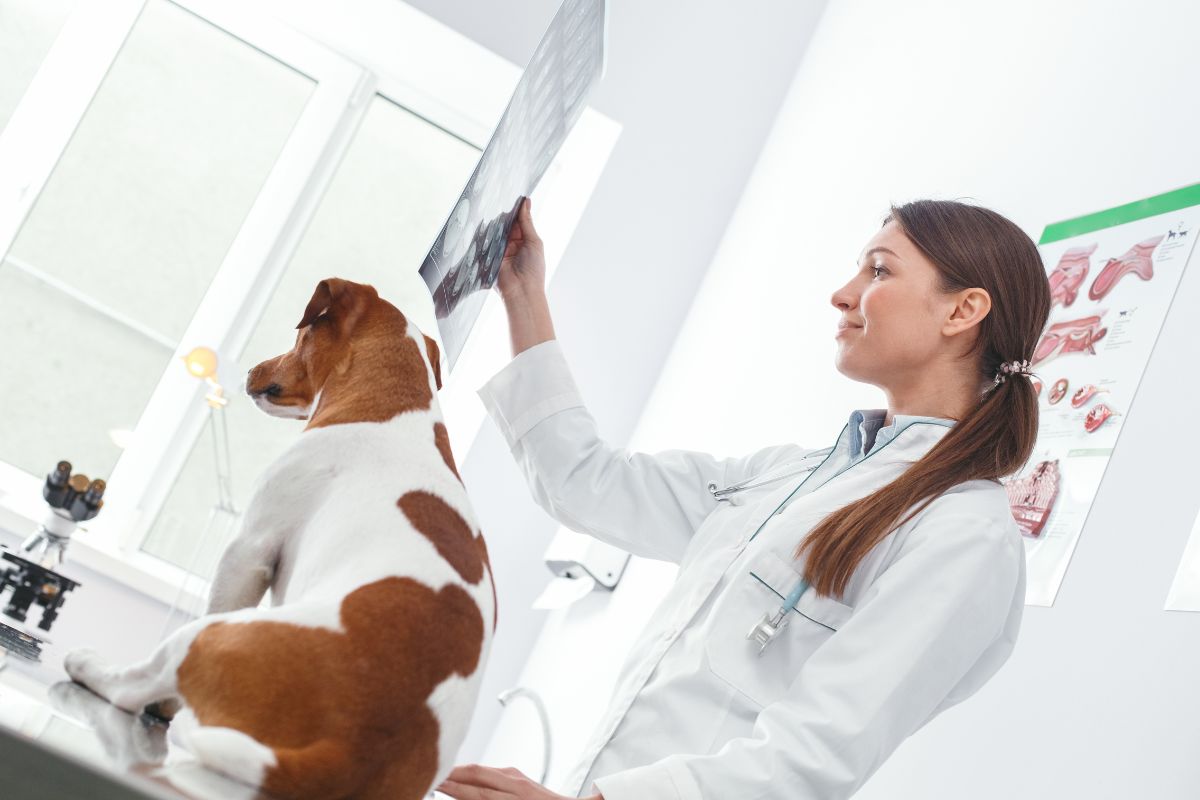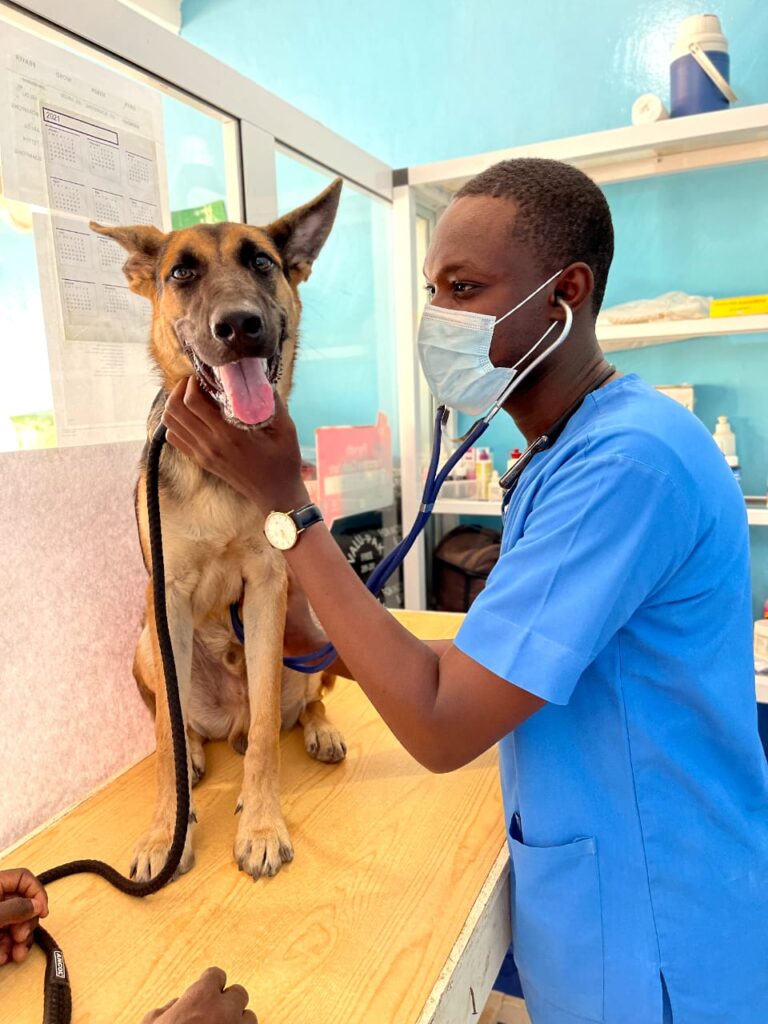Radiographs for Dogs
Radiographs for dogs or dog X-Rays are among the most popular and beneficial medical diagnostic procedures. The word “X-Rays” dates back to 1895, when German physicist Wilhelm Röntgen made the discovery. He named his work “On a New Kind of Rays” and used the term X-Rays instead of unknown rays. Read on to find out what to expect from radiographs.

How Much are Dog X-Rays?
So, how much is an X-Ray for a dog? Dog X-Rays typically cost around $250. Your pet won’t feel any pain throughout the operation, which is affordable and minimally intrusive. However, your dog will need to be motionless for a long time.
With a dog, this is considerably more challenging to execute than with a person. Most dogs need sedation during the X-Ray procedure to ensure a clean image and enable your veterinarian to diagnose any potential problems with your furry friend.
Because of this, the price depends in part on the size of your dog. Larger dogs typically cost more since they need more sedative medications than smaller pets. Your dog might require more sedatives or possibly general anesthesia for the treatment if they are particularly anxious or distressed.
Why are Dog X-Rays So Expensive?
Depending on several variables, a dog’s X-Ray can cost around $80 and $400 or more. Where you decide to take your dog might significantly impact the price.
Generally speaking, a large veterinary clinic will be more expensive than a vet in a small town. Animal welfare groups in certain places provide low-cost medical exams, which may include dog X-Rays.
The cost will be more if you take your dog to an emergency clinic rather than the vet’s office. Based on one X-Ray, the price range is between around $80 to $400. One X-Ray may not be enough to diagnose your dog’s fractured leg or broken bones in more than one place. This is especially true if the accident impacted many body parts.
The price also depends on your dog’s size. In certain cases, a small dog only needs one X-Ray. A huge dog, like a German shepherd, could need several X-Rays merely to see inside of it.
Without some form of medicine, it could be challenging to persuade your dog to lie motionless during the X-Ray. The dog will need sedation in this case. The cost of the X-Rays will increase due to anesthesia and pain medication.
What Do Dog X-Rays Diagnose?
One of the most useful and frequently applied instruments in both human and veterinary healthcare is the X-Ray. An X-Ray of a dog can help veterinarians diagnose conditions like bladder stones, fractured bones, swallowed foreign objects, and more by giving them a glimpse of your pet’s bones, tissues, and internal organs.
The best times to use X-Rays are when observing solid tissues and bodily parts with differing tissue densities. For instance, a vet can administer a dog chest X-Ray. The lungs in the chest absorb very little X-Rays because they are mostly air-filled and have a very soft density. The bony ribs are firm and very dense, but the heart muscle is denser.
A vet can observe large blood vessels inside the lungs and the heart silhouette on an X-Ray because the blood’s venous and arterial walls are denser than those of the surrounding lungs. Pulmonary edema, where fluid builds up in the lungs, is also easily visible.
A vet can identify numerous organs in the abdomen or foreign bodies stuck in the intestines. A dog spleen X-Ray and dog hip X-Rays are good since they determine the size and form of the spleen and hips. It may be more challenging to recognize the numerous internal organs in animals with excessive obesity or little body fat.
Dental radiographs are crucial for identifying which teeth are healthy and which ones require extraction. A dental radiograph can reveal abnormalities beneath the gums that would otherwise go unseen, such as injury to the tooth roots, tumors, and abscesses.
A vet cannot see the inside of the skull clearly on an X-Ray because the cranium’s bones absorb all of the radiation, making it impossible to see the brain matter.
With magnetic resonance imaging (MRI), computed tomography (CT), or ultrasound, a vet can see internal features such as the inner structure of the heart, the bladder or other abdominal organs, many joints, and the lungs.
With this straightforward and affordable diagnostic equipment, a knowledgeable veterinarian and veterinary radiologist can identify various illnesses.
How to Prepare a Canine for an X-Ray at Home
When you take your pet to the veterinarian to have a problem examined, a vet will perform an X-Ray. Therefore, there is no need for preparation. Then, if an X-Ray is necessary, your veterinarian will inspect your pet and take some time to go over the process and what they will be looking for.

Do Dogs Get Sedated for X-Rays?
Sometimes sedation is necessary to obtain a clean X-Ray. A dog won’t need sedation if it’s calm, not in too much pain, and can lay comfortably while the vet takes the X-Ray.
On the other hand, sedation is necessary if your dog is jittery, apprehensive, or in pain. Sedation is also essential if the dog’s muscles need relaxation to acquire a clean image. Other instances that need sedation are if the X-Ray is of the teeth, skull, or spine. During an X-Ray for puppies, a vet will need to sedate them.
Are X-Rays Canine-Safe?
While X-Ray use is typically safe for dogs, it involves radiation. Therefore, vets usually use X-Rays on occasion and utilize them as a diagnostic tool. Veterinarians perform pregnant dog X-Rays occasionally to learn more about a dog’s pregnancy. Alternatively, they may use ultrasound or other imaging techniques.
Speak to your veterinarian if you have issues with the usage of X-Ray equipment and the health of your dog. To decide if you want your dog to get an X-Ray, your veterinarian can explain the risks and benefits of your dog’s situation.

